
Enchanting Shores of Prince Edward Island National Park
Discover the breathtaking beauty of Prince Edward Island National Park, where stunning coastal landscapes, pristine beaches, and rich cultural heritage await you.
Nestled on the north shore of Prince Edward Island, this national park is a haven for nature lovers, beachgoers, and history buffs alike. The park stretches over 60 kilometers, offering a stunning blend of red sandstone cliffs, sandy beaches, and scenic coastal dunes. Visitors can enjoy a range of outdoor activities, from hiking and cycling to birdwatching and kayaking. Prince Edward Island National Park is also home to the iconic Green Gables Heritage Place, the inspiration for Lucy Maud Montgomery's beloved novel, 'Anne of Green Gables.' Wander through the charming farmhouse and surrounding gardens, and step back in time to experience the world of Anne and her adventures. The park boasts several campgrounds and picnic areas, making it an ideal spot for families and outdoor enthusiasts. Whether you're exploring the trails, relaxing on the beach, or discovering the island's rich cultural history, Prince Edward Island National Park offers a unique and memorable escape into nature.
Local tips in Prince Edward Island National Park
- Visit in late June to early September for the best weather and access to all park facilities.
- Don't miss the Green Gables Heritage Place for a glimpse into the world of 'Anne of Green Gables.'
- Pack insect repellent, especially in summer, to keep mosquitoes and blackflies at bay.
- Check the tide times if you're planning to explore the beaches or go kayaking.
- Take advantage of the park's free interpretive programs to learn more about the local wildlife and history.
Enchanting Shores of Prince Edward Island National Park
Nestled on the north shore of Prince Edward Island, this national park is a haven for nature lovers, beachgoers, and history buffs alike. The park stretches over 60 kilometers, offering a stunning blend of red sandstone cliffs, sandy beaches, and scenic coastal dunes. Visitors can enjoy a range of outdoor activities, from hiking and cycling to birdwatching and kayaking. Prince Edward Island National Park is also home to the iconic Green Gables Heritage Place, the inspiration for Lucy Maud Montgomery's beloved novel, 'Anne of Green Gables.' Wander through the charming farmhouse and surrounding gardens, and step back in time to experience the world of Anne and her adventures. The park boasts several campgrounds and picnic areas, making it an ideal spot for families and outdoor enthusiasts. Whether you're exploring the trails, relaxing on the beach, or discovering the island's rich cultural history, Prince Edward Island National Park offers a unique and memorable escape into nature.
When is the best time to go to Prince Edward Island National Park?
Iconic landmarks you can’t miss
Green Gables Heritage Place
Step into the world of Anne of Green Gables at Green Gables Heritage Place, a charming historical site in Cavendish, Prince Edward Island, rich with culture and beauty.
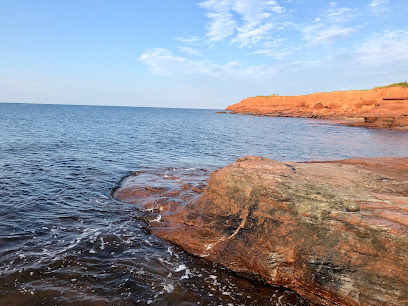
Cavendish Beach, Prince Edward Island National Park
Experience the breathtaking beauty of Cavendish Beach in Prince Edward Island National Park, a perfect blend of relaxation and adventure.

Confederation Bridge
Experience the breathtaking views and engineering marvel of the Confederation Bridge, a key connection between New Brunswick and Prince Edward Island.

Avonlea Village
Experience the enchanting world of Anne of Green Gables at Avonlea Village, a charming destination rich in history and natural beauty.

Sandspit Cavendish Beach
Experience fun and excitement at Sandspit Cavendish Beach, a family-friendly amusement park on the beautiful shores of Prince Edward Island.

Point Prim Lighthouse
Explore Point Prim Lighthouse, the oldest lighthouse in Prince Edward Island, offering stunning coastal views and a charming gift shop for unique souvenirs.

Anne of Green Gables Museum
Dive into the enchanting world of Anne of Green Gables at this charming museum in Kensington, PEI, filled with rich history and captivating exhibits.

Confederation Landing
Explore the picturesque Confederation Landing, a serene park in Charlottetown offering stunning waterfront views and rich historical significance.

East Point Lighthouse
Explore the historic East Point Lighthouse, a scenic gem on Prince Edward Island renowned for its maritime history and breathtaking coastal views.

Bottle Houses- Maisons de Bouteilles Opening May 18 at 10:00 a.m.
Explore the enchanting Bottle Houses of Prince Edward Island, a unique blend of art and nature showcasing beautiful bottle structures and gardens.

Argyle Shore Provincial Park
Explore the stunning red sands and tranquil landscapes of Argyle Shore Provincial Park, a must-visit destination in Prince Edward Island for nature lovers.

Cedar Dunes Provincial Park
Discover the serene beauty of Cedar Dunes Provincial Park, a perfect getaway combining stunning beaches, scenic trails, and rich wildlife on Prince Edward Island.

West Point Lighthouse Museum
Explore maritime history and stunning coastal views at the iconic West Point Lighthouse Museum on Prince Edward Island.

Brackley Beach, Prince Edward Island National Park
Discover the pristine beauty and recreational delights of Brackley Beach in Prince Edward Island National Park, a perfect coastal getaway for families and nature lovers.

Ripley's Believe It Or Not!
Discover the extraordinary at Ripley's Believe It Or Not! in Green Gables - a quirky attraction filled with oddities and wonders for all ages.

Unmissable attractions to see
Confederation Bridge
Experience the breathtaking Confederation Bridge, a stunning 12.9 km connection to Prince Edward Island, showcasing incredible views and cultural heritage.

Avonlea Village
Experience the magic of Anne of Green Gables at Avonlea Village, a charming tourist attraction in Prince Edward Island that celebrates history and storytelling.

Sandspit Cavendish Beach
Experience the excitement of Sandspit Cavendish Beach, a premier amusement park in Prince Edward Island with rides, games, and beautiful beach views.

Point Prim Lighthouse
Explore the historic Point Prim Lighthouse on Prince Edward Island, a scenic landmark offering stunning views and a glimpse into maritime heritage.

Basin Head Provincial Park
Discover the natural beauty of Basin Head Provincial Park, a premier beach destination in Prince Edward Island with stunning scenery and rich marine life.
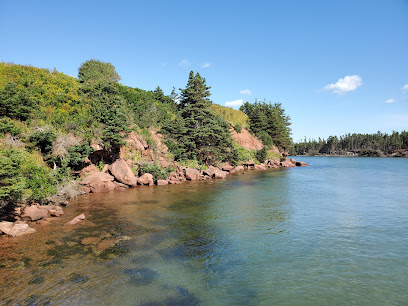
East Point Lighthouse
Explore the historical East Point Lighthouse, a stunning maritime landmark on Prince Edward Island, offering breathtaking views and rich coastal heritage.

Borden-Carleton Visitor Information Centre
Explore the wonders of Prince Edward Island at the Borden-Carleton Visitor Information Centre, your essential travel guide to the island's best attractions and experiences.

Cabot Beach Provincial Park
Experience the serene beauty and outdoor adventures at Cabot Beach Provincial Park, a gem on Prince Edward Island's stunning coastline.
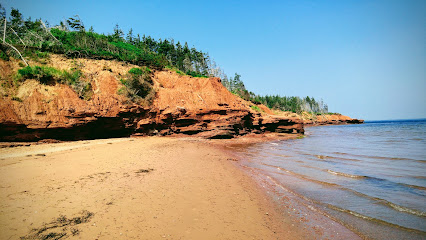
Bottle Houses- Maisons de Bouteilles Opening May 18 at 10:00 a.m.
Explore the whimsical Bottle Houses in Wellington, PEI, a stunning garden attraction made of recycled glass bottles, perfect for families and art lovers.

Canadian Potato Museum & Antique Farm Machinery Museum
Explore the Canadian Potato Museum & Antique Farm Machinery Museum in O'Leary, PEI—uncovering the history and significance of potatoes in agriculture.

Argyle Shore Provincial Park
Experience the breathtaking landscapes and vibrant wildlife of Argyle Shore Provincial Park, a coastal paradise in Prince Edward Island.
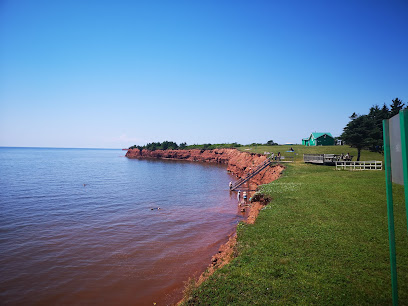
Cedar Dunes Provincial Park
Discover the serene beauty of Cedar Dunes Provincial Park, a coastal gem in Prince Edward Island with stunning beaches and outdoor adventures.

West Point Lighthouse Museum
Explore the rich maritime heritage at West Point Lighthouse Museum, a captivating destination on Prince Edward Island's scenic coast.

Ripley's Believe It Or Not!
Uncover the world's strangest wonders at Ripley's Believe It Or Not! in Green Gables, where curiosity and adventure await every visitor.

Cape Tryon Lighthouse
Discover Cape Tryon Lighthouse, a historic gem on Prince Edward Island, offering stunning coastal views and a glimpse into maritime heritage.

Essential places to dine
Blue Mussel Cafe
Experience exquisite seafood at Blue Mussel Cafe in North Rustico - where fresh flavors meet stunning waterfront views.

Hopyard
Discover Hopyard: Where Flavor Meets Fun in Charlottetown's Vibrant Culinary Scene.

Lobster Barn
Experience authentic Prince Edward Island seafood at Lobster Barn – where fresh flavors meet local charm in Victoria.
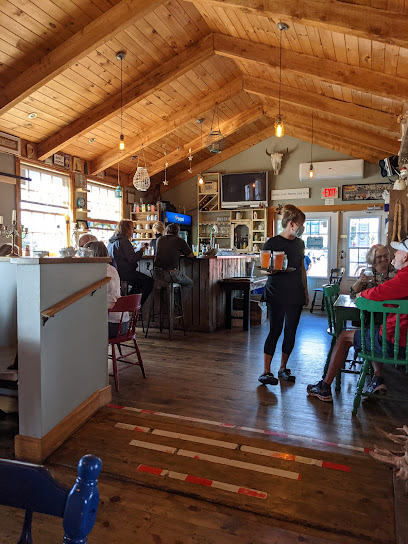
Sims Corner Steakhouse & Oyster Bar
Experience exceptional dining at Sims Corner Steakhouse & Oyster Bar with exquisite steaks and fresh seafood in downtown Charlottetown.

Peakes Quay Restaurant & Bar
Discover fresh seafood delights and vibrant nightlife at Peakes Quay Restaurant & Bar in Charlottetown's scenic waterfront.

Prince Edward Island Preserve Company
Experience authentic PEI flavors and unique gifts at Prince Edward Island Preserve Company—your gateway to local culinary delights.

The Gahan House
Discover The Gahan House: A Brewpub Gem in Charlottetown Offering Local Craft Beers & Delicious Cuisine.

Chez Yvonne's
Experience the flavors of Prince Edward Island at Chez Yvonne's - a seafood haven in New Glasgow with warm service and delicious home-cooked meals.

Point Prim Chowderhouse
Discover culinary excellence at Point Prim Chowderhouse, where fresh seafood meets breathtaking views on Prince Edward Island.

The Lost Anchor
Experience the rich culinary traditions of Prince Edward Island at The Lost Anchor—a must-visit restaurant for every food lover.

Carr's Oyster Bar
Discover fresh seafood delights at Carr's Oyster Bar in Stanley Bridge - where every meal celebrates Prince Edward Island's rich maritime heritage.

Claddagh Oyster House
Experience exquisite seafood dining at Claddagh Oyster House in Charlottetown - where fresh flavors meet fine dining elegance.

21 Breakwater Restaurant
Experience delightful seafood and family-friendly dining at 21 Breakwater Restaurant in scenic Souris, PE.

FiN Folk Food
Experience authentic Canadian seafood at FiN Folk Food in York, PEI - where freshness meets flavor in every dish.
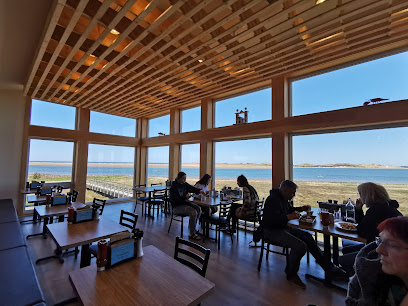
Landmark Oyster House
Discover fresh oysters and authentic East Coast cuisine at Landmark Oyster House in Victoria, PE - where every meal tells a story.

Markets, malls and hidden boutiques
Prince Edward Island National Park
Explore the breathtaking landscapes and rich biodiversity of Prince Edward Island National Park, a premier destination for nature and adventure lovers.

Cavendish Boardwalk
Experience the vibrant Cavendish Boardwalk, where shopping meets stunning coastal views and delightful local flavors await.

Spinnakers' Landing
Explore Spinnakers' Landing in Summerside, PE - a market bursting with unique shops, delightful restaurants, and waterfront charm.

O'NEiLs PEI
Explore the artistic treasures of O'NEiLs PEI, a unique gallery and gift shop showcasing local talent in the heart of Prince Edward Island.

Victoria Row
Experience the vibrant atmosphere of Victoria Row in Charlottetown, where shopping, dining, and culture come together in perfect harmony.

Shop & Play
Explore the charm of Prince Edward Island at Shop & Play, your ultimate destination for unique gifts and local crafts.

The Anne of Green Gables Store
Explore a treasure trove of Anne of Green Gables memorabilia at this charming novelty store in the heart of Charlottetown, PEI.

Luna Eclectic Emporium
Explore a treasure trove of unique gifts, clothing, and footwear at Luna Eclectic Emporium in the heart of Charlottetown, PE.

Cool As A Moose
Explore Cool As A Moose in Charlottetown for unique PEI-themed clothing and gifts that capture the spirit of Prince Edward Island.

Coastal Culture
Explore Coastal Culture in Cavendish, PEI - your go-to gift shop for unique local crafts and souvenirs that capture the island's spirit.

North Cape Gift Shop
Discover the essence of Prince Edward Island at North Cape Gift Shop, where unique treasures and local crafts await every visitor.

Stanley Bridge Studios
Explore the unique and quirky treasures at Stanley Bridge Studios in Prince Edward Island, perfect for souvenirs and local crafts.

PEI Fox Den
Explore PEI Fox Den: A unique gift shop and art gallery showcasing local artisans' creativity and craftsmanship in North Bedeque.
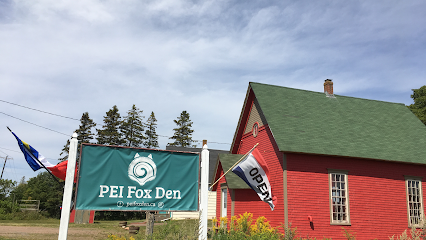
Seagull's Nest Gift Shop
Explore the charm of Seagull's Nest Gift Shop in North Rustico, PEI, where local crafts and unique treasures await every visitor.

Oh Hey by the Sea
Discover the charm of Prince Edward Island at Oh Hey by the Sea, where unique gifts and local artistry come together in an unforgettable shopping experience.
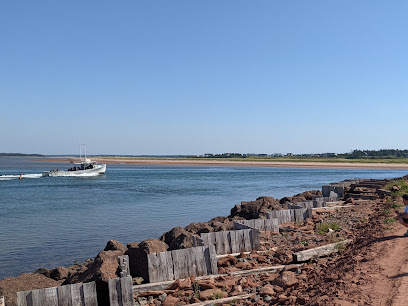
Essential bars & hidden hideouts
Hunter's Ale House
Discover the heart of Charlottetown dining at Hunter's Ale House, where local flavors and a vibrant atmosphere await.
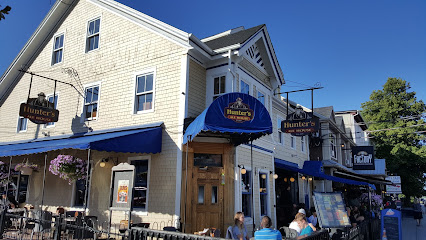
Hopyard
Discover Hopyard: A vibrant fusion restaurant in Charlottetown, offering delicious cuisine and an extensive craft beer selection in a lively atmosphere.

Olde Dublin Pub
Discover Olde Dublin Pub in Charlottetown, where Irish charm meets local flavors in a lively atmosphere filled with warmth and hospitality.
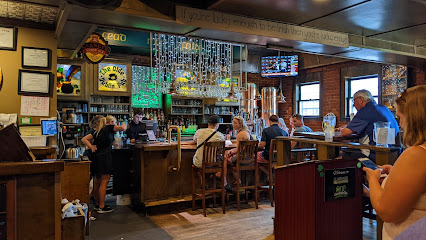
The Old Triangle
Experience the heart of Irish culture at The Old Triangle, a vibrant pub in Charlottetown offering traditional cuisine, lively music, and a welcoming atmosphere.

Peakes Quay Restaurant & Bar
Experience the vibrant flavors and nightlife of Peakes Quay Restaurant & Bar, a culinary hotspot in Charlottetown, PE, with stunning waterfront views.

Prince Edward Island Preserve Company
Explore local delicacies and unique gifts at Prince Edward Island Preserve Company, a delightful blend of culinary excellence and charming shopping.

The Gahan House
Experience the best of local craft beers and delicious dining at The Gahan House, a must-visit brewpub in Charlottetown.

Churchill Arms
Discover Churchill Arms, a cherished pub in downtown Charlottetown, offering a perfect blend of local flavors and vibrant atmosphere.

Sou'West
Discover the flavors of Prince Edward Island at Sou'West, a charming seafood restaurant in New London offering fresh, locally sourced dishes.

Carr's Oyster Bar
Explore the flavors of the sea at Carr's Oyster Bar, where fresh oysters and delightful seafood dishes await in the heart of Prince Edward Island.
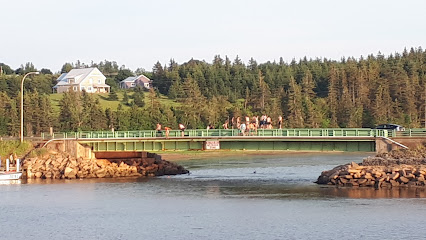
Salt & Sol Restaurant and Lounge
Experience the best of seafood and cocktails at Salt & Sol, the perfect dining destination in Charlottetown, Prince Edward Island.

bar1911
Discover the best of local cuisine and craft beverages at Bar1911, a must-visit bar and restaurant in the heart of Charlottetown.

The Silver Fox Entertainment Complex
Discover the vibrant atmosphere and diverse entertainment at The Silver Fox Entertainment Complex in Summerside, PE, where fun meets relaxation.

Craft Beer Corner
Discover the best craft beers in Charlottetown at Craft Beer Corner, a cozy bar offering a wide selection of local and international brews.

Lone Oak Brew Pub - Milky Way
Experience the warmth of Lone Oak Brew Pub - Milky Way, where local flavors and craft brews create unforgettable moments in Charlottetown.

Local Phrases about Prince Edward Island National Park
-
- HelloHey there
[Hey th-air] - GoodbyeSee ya
[See y-ah] - YesYup
[Yup] - NoNah
[N-ah] - Please/You're welcomePlease/You're welcome
[Please/You're welcome] - Thank youThanks a lot
[Thanks a lot] - Excuse me/SorryPardon me
[Pardon me] - How are you?How's it goin'?
[How's it goin'?] - Fine. And you?Good. You?
[Good. You?] - Do you speak English?Can you talk English?
[Can you talk English?] - I don't understandI don't get it
[I don't get it]
- HelloHey there
-
- I'd like to see the menu, pleaseCan I check out the menu?
[Can I check out the menu?] - I don't eat meatI don't eat meat
[I don't eat meat] - Cheers!Cheers!
[Cheers!] - I would like to pay, pleaseI'd like to settle up, please
[I'd like to settle up, please]
- I'd like to see the menu, pleaseCan I check out the menu?
-
- Help!Help!
[Help!] - Go away!Get lost!
[Get lost!] - Call the Police!Call the cops!
[Call the cops!] - Call a doctor!Need a doc!
[Need a doc!] - I'm lostI'm lost
[I'm lost] - I'm illI'm sick
[I'm sick]
- Help!Help!
-
- I'd like to buy...I wanna buy...
[I wanna buy...] - I'm just lookingI'm just browsing
[I'm just browsing] - How much is it?What's the price?
[What's the price?] - That's too expensiveThat's way too much
[That's way too much] - Can you lower the price?Can you drop the price?
[Can you drop the price?]
- I'd like to buy...I wanna buy...
-
- What time is it?What's the time?
[What's the time?] - It's one o'clockIt's one
[It's one] - Half past (10)Half past (10)
[Half past (10)] - MorningMorning
[Morning] - AfternoonAfternoon
[Afternoon] - EveningEvening
[Evening] - YesterdayYesterday
[Yesterday] - TodayToday
[Today] - TomorrowTomorrow
[Tomorrow] - 11
[1] - 22
[2] - 33
[3] - 44
[4] - 55
[5] - 66
[6] - 77
[7] - 88
[8] - 99
[9] - 1010
[10]
- What time is it?What's the time?
-
- Where's a/the...?Where's the...?
[Where's the...?] - What's the address?What's the address?
[What's the address?] - Can you show me (on the map)?Can you show me (on the map)?
[Can you show me (on the map)?] - When's the next (bus)?When's the next (bus)?
[When's the next (bus)?] - A ticket (to ....)A ticket (to ....)
[A ticket (to ....)]
- Where's a/the...?Where's the...?
History of Prince Edward Island National Park
-
Long before European settlers arrived, the Mi'kmaq people called Prince Edward Island their home. They referred to the island as Epekwitk, meaning 'cradled on the waves.' The Mi'kmaq were skilled fishers, hunters, and gatherers, and their influence is still evident today in place names and cultural practices throughout the island.
-
In the early 16th century, European explorers, including Jacques Cartier and Samuel de Champlain, began charting the waters around Prince Edward Island. The island was later colonized by French settlers and became part of the colony of Acadia. After the Treaty of Paris in 1763, the island came under British control and was renamed St. John’s Island before being renamed again to Prince Edward Island in 1799 in honor of Prince Edward, Duke of Kent and Strathearn.
-
Prince Edward Island National Park was established in 1937 to protect a significant portion of the island’s natural beauty and cultural heritage. The park spans over 60 kilometers of coastline and preserves stunning landscapes, including sand dunes, beaches, red sandstone cliffs, and lush forests. It also protects several historic sites, particularly those related to the literary legacy of Lucy Maud Montgomery.
-
One of the most iconic locations within the park is the Green Gables Heritage Place. This site was the inspiration for Lucy Maud Montgomery's beloved novel 'Anne of Green Gables.' The house and surrounding grounds have been carefully preserved to reflect the late 19th century setting of the book, attracting fans from around the world who wish to experience the world of Anne Shirley.
-
During World War II, the Cavendish Dunes within Prince Edward Island National Park were used as a training ground for Canadian and British soldiers. The area provided a unique environment for preparing troops for the sandy beaches of Normandy. Today, remnants of this wartime history can still be seen, and interpretive panels provide visitors with insights into this period.
-
In recent decades, conservation efforts have been a major focus within Prince Edward Island National Park. Initiatives to protect endangered species, such as the piping plover, and to restore natural habitats have been implemented. The park is also involved in dune stabilization projects to prevent erosion and preserve the unique landscape for future generations.
-
Prince Edward Island National Park hosts numerous cultural festivals and events that celebrate the island’s rich history and diverse heritage. These include Mi'kmaq cultural demonstrations, traditional Acadian music and dance performances, and annual literary events honoring Lucy Maud Montgomery. These events offer visitors a vibrant and immersive experience of the island’s culture.
Prince Edward Island National Park Essentials
-
Prince Edward Island (PEI) is accessible by air, sea, and land. The nearest airport is Charlottetown Airport (YYG), which receives flights from major Canadian cities. From the mainland, you can also take the Confederation Bridge, an engineering marvel connecting New Brunswick to PEI. Additionally, Northumberland Ferries offers a seasonal ferry service from Caribou, Nova Scotia to Wood Islands, PEI. Once on the island, the park is a short drive from Charlottetown.
-
While renting a car is the most convenient way to explore the entire island and the national park, there are other options. Public transportation is limited but available through T3 Transit, which operates routes connecting Charlottetown, Summerside, and other key locations. Biking is also a popular way to explore the park, with well-maintained trails and rental shops available. Taxis and rideshare services are available, but less prevalent in rural areas.
-
The official currency is the Canadian Dollar (CAD). Credit and debit cards are widely accepted throughout PEI, including in the national park. ATMs are available in Charlottetown and other towns, but it's wise to carry some cash for smaller establishments and rural areas within the park.
-
Prince Edward Island National Park is generally very safe for tourists. Violent crime is rare, and the island's community is welcoming. However, as with any travel destination, basic precautions should be taken. Always lock your vehicle and do not leave valuables in plain sight. Be cautious when hiking or exploring remote areas and always inform someone of your plans.
-
In case of emergencies, dial 911 for police, fire, or medical assistance. The closest hospital to the park is the Queen Elizabeth Hospital in Charlottetown. It is advisable to have travel insurance that covers medical emergencies. For minor injuries or health concerns, first aid services are available at the park's visitor centers.
-
Fashion: Do dress in layers and bring waterproof clothing as weather can be unpredictable. Avoid wearing overly revealing clothing. Religion: Do respect local customs and religious practices, especially when visiting historic churches or sites. Public Transport: Do check schedules in advance as public transport can be infrequent. Don’t be loud or disruptive on public transportation. Greetings: Do greet locals with a smile and a friendly hello. Islanders are known for their hospitality. Eating & Drinking: Do try local seafood and other island specialties. Don’t leave food waste behind in the park; always use designated disposal areas.
-
To experience Prince Edward Island National Park like a local, visit off-peak seasons to enjoy the tranquility and natural beauty without large crowds. Engage with park rangers and locals for insider tips on hidden gems and lesser-known trails. Attend local events and festivals to immerse yourself in the island's culture. Don’t miss the opportunity to explore the park's stunning beaches and participate in ranger-led programs to learn more about the area's unique ecology and history.
Trending Landmarks in Prince Edward Island National Park
-
Green Gables Heritage Place
-
Cavendish Beach, Prince Edward Island National Park
-
Confederation Bridge
-
Avonlea Village
-
Sandspit Cavendish Beach
-
Point Prim Lighthouse
-
Anne of Green Gables Museum
-
Confederation Landing
-
East Point Lighthouse
-
Bottle Houses- Maisons de Bouteilles Opening May 18 at 10:00 a.m.
-
Argyle Shore Provincial Park
-
Cedar Dunes Provincial Park
-
West Point Lighthouse Museum
-
Brackley Beach, Prince Edward Island National Park
-
Ripley's Believe It Or Not!
Nearby Cities to Prince Edward Island National Park
-
Things To Do in Bar Harbor
-
Things To Do in Acadia National Park
-
Things To Do in Bangor
-
Things To Do in Camden
-
Things To Do in Miquelon
-
Things To Do in Langlade
-
Things To Do in Rockland
-
Things To Do in Saint-Pierre Airport
-
Things To Do in Saint-Pierre Ferry Terminal
-
Things To Do in Waterville
-
Things To Do in Augusta
-
Things To Do in Brunswick
-
Things To Do in Lewiston
-
Things To Do in Quebec City
-
Things To Do in South Portland









